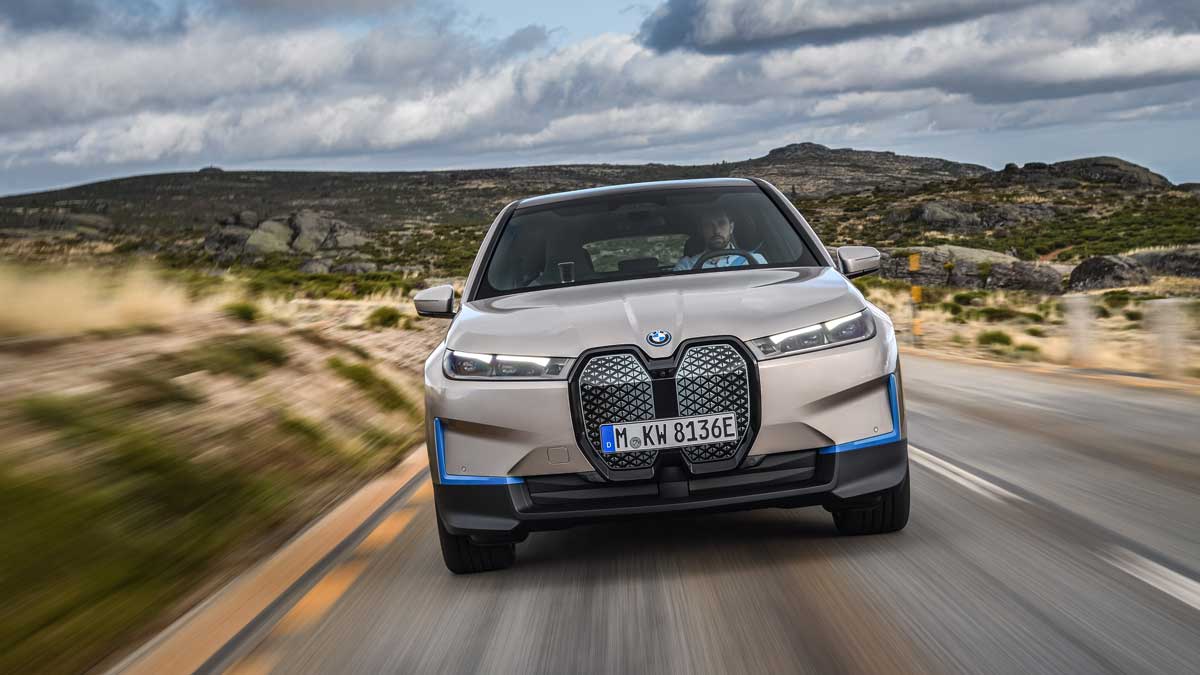The Australian arm of German car maker BMW has opened up reservations for the first tranche of its new BMW iX ahead of its local launch in late 2021.
The new EV model’s 100kWh-plus high-voltage battery will deliver a range of more than 600 kilometres, and can fast charge at a maximum rate of 200kW, the company says. It is yet to reveal pricing, and reservations will be taken on a first come, first serve basis.
The iX is the production version of its innovative iVision Next concept first unveiled in 2016, and represents new advances for BMW in electrification, automated driving technology and connectivity.
“The BMW Group is constantly striving to re-invent itself,” said Oliver Zipse, board chair for BMW AG in a statement. “That is a central element of our corporate strategy. The BMW iX expresses this approach in an extremely concentrated form.”
BMW says it has looked to develop the iX from the inside out and focused on the interior of the vehicle.
“The BMW iX shows how we can give new technologies a very modern and emotionally engaging design,” said Adrian van Hooydonk, senior VP for BMW Group’s design department.

In keeping with the “Shy Tech” approach, BMW has deliberately kept the exterior minimalist – apart from the giant kidney-shaped grille on the front of the vehicle, which BMW calls the “intelligence surface” and behind which are housed camera technology, radar and other sensors.
According to BMW, the iX is about the same size as the X5, its height comparable to the X6, while the tires are based on those of the X7.
According to the manufacturer, the drive is the fifth generation of the eDrive, which generates a maximum output of more than 370 kilowatts and 500 horsepower. This means that the iX should accelerate from zero to 100 kilometres per hour in less than five seconds.
BMW emphasizes that its electric motors are manufactured without rare earths and that the high-voltage battery not only uses materials from renewable resources but also has a high recycling rate thanks to a planned long-term resource cycle.
BMW says power consumption is less than 21kW/100km according to the WLTP test cycle, thanks to its aerodynamic 0.25 drag coefficient (Cd).

According to BMW, the iX has a generous amount of space in the interior and an “exceptionally large panoramic glass roof”. What is also striking are the large curved displays in the cockpit, which are covered by a frameless, one-piece glass surface.
The information display in front of the driver has a diagonal of 12.3 inches, while the control display to the right is 14.9 inches. The steering wheel is intentionally shaped in a hexagonal shape so that the driver’s field of view of the display area is not blocked.
Many technical functions are discreetly hidden by “Shy Tech”: This approach is used, for example, in the integrated speakers, filigree air vents or the heated surfaces.

Although the original BMW iNext concept was originally billed as an autonomous vehicle, the BMW iX will not come onto the market with level 3 automation as originally planned, but does boast 20x the processing capacity in terms of its automated driving and digital functions.
Furthermore, the iX should already be 5G-capable. BMW says that the vehicle will also receive improved automated driving and parking functions via over-the-air update.

Bridie Schmidt is associate editor for The Driven, sister site of Renew Economy. She has been writing about electric vehicles since 2018, and has a keen interest in the role that zero-emissions transport has to play in sustainability. She has participated in podcasts such as Download This Show with Marc Fennell and Shirtloads of Science with Karl Kruszelnicki and is co-organiser of the Northern Rivers Electric Vehicle Forum. Bridie also owns a Tesla Model Y and has it available for hire on evee.com.au.


